What is Wi-Fi?
"Wi-Fi" is the friendly common name for the IEEE 802.11 series of technology protocols commonly used for creating wireless local area networks.
Instead of using wires, a Wi-Fi access point creates a local network by broadcasting over pre-defined unlicensed channels, hosting a network that nearby devices can connect to if they know the network's name and password.
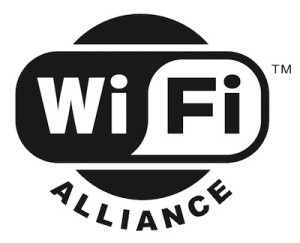
Wi-Fi is primarily a short-range local wireless networking technology. The Wi-Fi Alliance owns the trademark to "Wi-Fi" - only allowing certified compatible and interoperable devices to officially claim Wi-Fi compatibility.
While it is possible to have Wi-Fi networks that are NOT connected to the Internet, it is quite common for a Wi-Fi router to distribute an upstream Internet connection to multiple devices on your network.
The internet source might be cable, fiber, satellite, cellular, or even another Wi-Fi network - or some combination of these technologies.
But Wi-Fi itself is NOT the Internet; it is just a networking protocol technology—a wireless version of an Ethernet cable.
The wireless signal created by a Wi-Fi access point is relatively short-range and meant to cover a limited area—typically only a few hundred feet.
All modern laptops, smartphones, tablets, streaming devices, many TVs, and most other internet-connected devices have Wi-Fi and can connect to an access point.
Most routers and cellular-enabled mobile devices can create a private local area wireless network, sharing a central upstream Internet connection.
Mobile travelers like RVers and cruisers may encounter Wi-Fi technology in multiple forms during their travels —both in their own local area networking, shared public access points, and borrowing bandwidth from friends they might visit.
This guide will help explain just what Wi-Fi is and the many forms it comes in.
If you're a member, please log in above to see your exclusive content.
Don't need a membership? Other ways you can support our work here:
-
As seen in our videos!
-
Get a FREE Month of Starlink!
And our team will get one too!
-
Get a FREE Month of T-Mobile Unlimited Data
Join the Calyx Institute, and get a bonus month - and we do too!
-
Save $20 on Visible
Verizon's prepaid phone plan, we also get a $20 credit.
-
Leave a Tip!
Send our team some beer money!!
-
Share About Us!
Link to our content, tell others about MIRC. It's Free!
It is with huge gratitude to our members for making the free unbiased educational content on our site possible. We're not sponsored, you'll find no 3rd party ads and we don't sell gear or data plans.
Our members get exclusive access to our in-depth content, classrooms, vendor discounts (that can save you more than membership!), alerts, insider info and interactive guidance. They can even book private advising sessions.
If mobile internet is an important part of your lifestyle, consider helping make MIRC possible by joining or supporting our mission.
Wi-Fi Technology is Not the Internet
How often have you heard (or even said yourself)...
I need some Wi-Fi!
... When the actual meaning was: 'I need to get online'?
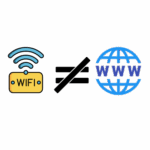 Because Wi-Fi technology is often used to deliver internet access to computers and other devices, it has also come to mean internet access.
Because Wi-Fi technology is often used to deliver internet access to computers and other devices, it has also come to mean internet access.
But technically, Wi-Fi does not mean internet access. It is simply a wireless technology used for connecting devices.
This can cause a great deal of confusion, especially for mobile travelers who might be utilizing different forms of wireless technology to get their internet access.
RVers and cruisers commonly get online via a cellular data connection, satellite provider (like Starlink), or existing Wi-Fi network (such as you might find at a campground, marina, or cafe).
While cellular and satellite use wireless signals, they differ from Wi-Fi technology.
These differences matter when you're considering your mobile internet setup, as each requires different strategies for getting the best signal and performance.
A Wi-Fi extender will not help you get a better cellular signal, and a cellular booster will not help you with getting a better signal from your campground's or marina's Wi-Fi network.
The radios involved, frequency bands used, and the technology underlying Wi-Fi, satellite, and cellular data differ.
How Cellular Is Different than Wi-Fi Technology

There's a lot of confusion between Wi-Fi and cellular, two popular mobile internet connections.
They are both wireless technologies and a Wi-Fi signal is commonly used to share a cellular connection with other devices.
Cellular technology is a wireless technology that is longer-range than Wi-Fi.
All smartphones have cellular capabilities built in, but so do some tablets, newer cars, laptops, and routers.
When using cellular data, you access the Internet via a cell tower that might be within sight or perhaps as far as 20 miles away. That cell tower, in turn, usually has a very high-speed connection to the Internet itself.
Using cellular data requires a data plan with a cellular carrier such as Verizon, AT&T, T-Mobile, Dish, or one of their many subsidiaries or resellers.
To add to the confusion, the latest flagship phones are now capable of having limited connectivity directly with satellites, either via cellular signals, or a special satellite wireless connection.
Video Overview: Wi-Fi Update for Mobile Internet (Early 2024)
Where Cellular & Wi-Fi Technology Collide: Hotspots & Cellular Routers
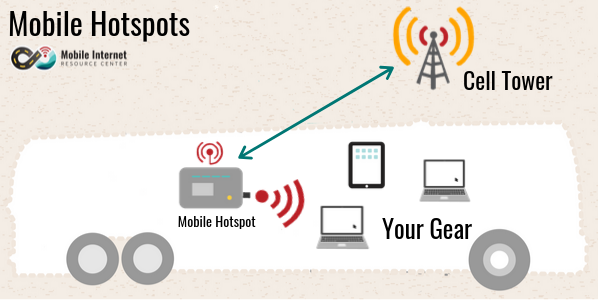
Smartphones, mobile hotspots, and mobile routers with cellular modems built-in merge cellular and Wi-Fi technology.
These cellular devices can also create a Wi-Fi hotspot to share the cellular data connection with other devices.
A smartphone or tablet can usually create a personal Wi-Fi hotspot to share its connection in a basic way. Dedicated cellular mobile hotspots (also sometimes called a MiFi or Jetpack) leave out the smartphone features to focus on providing a cellular data connection to other devices via Wi-Fi, USB, or sometimes Ethernet.
For more robust needs, cellular embedded routers offer more advanced networking options - think of them as a home internet router with a built-in cellular connection instead of using a landline like cable or fiber.
For more on Cellular Data:
Member Exclusive Content Below
Member Exclusive Content In This Guide
Has this guide been helpful so far?
Well.. there's a lot more below available to our members. As well as dozens of other guides like this, videos, classrooms, forums, webinars and more. All specifically created for helping keep RVers, cruisers and nomads online.
Consider Becoming a Member
If mobile internet is an important part of your lifestyle, a membership can help keep you connected with these exclusive benefits:
- in-depth exclusive content
- interactive guidance
- vendor discounts
- alerts & insider tips
- classroom
- community
Free Content Like This Made Possible By Our Members!
We are community funded via our premium membership program - allowing us to focus on creating unbiased quality, in-depth, constantly updated content. We don't accept 3rd party advertising, we're not sponsored and we don't sell 'stuff'.
Already a member?
Log in to continue with this guide.
Check out the Topics Covered in the Member Section:
Wi-Fi Frequencies & Channels
Explaining the differences between 2.4, 5, and 6 GHz Wi-Fi channels and how to effectively utilize each.
Wi-Fi Standards
Understanding the alphabet soup of different generations of 802.11 standards, including Wi-Fi 6, 6E, 7, WiGig, and HaLow.
Wi-Fi Challenges
How to optimize Wi-Fi signals by knowing what can inhibit their optimal performance.
Wi-Fi Configuration for Performance & Congestion
Settings to optimize Wi-Fi performance.
Wi-Fi as WAN and LAN
You might use Wi-Fi in two different ways in your travels: as your local area network and as your internet source. This section discusses the different considerations for each.
Additional Reading
Related Guides
Explore the Resource Center
Have Questions?
Join our 'Library Desk':
Internet for RVers & Cruisers Facebook Group
We cross post news articles and guides, and can help point you in the right direction to our content here on the resource center.
It is with gratitude to our premium members that we're able to offer our free content - and for that, they also have access to our member Q&A areas for more in-depth guidance.
Become a Member
 The MIA is our premium membership - designed for those who consider mobile internet an important part of their lifestyle.
The MIA is our premium membership - designed for those who consider mobile internet an important part of their lifestyle.
In thanks for making content like this possible, we offer a bunch of additional perks. From interactive guidance, in-depth member exclusive content, discounts, alerts, classroom and ability to book private advising sessions.
Stay In the Know
We're constantly tracking the industry and analyzing new developments for mobile travelers. If you'd like to receive updates, we offer several ways:
- Subscribe to our free monthly newsletter
- Subscribe to our News Stories RSS Feed
- Subscribe to our YouTube Channel
- Follow our Facebook Page
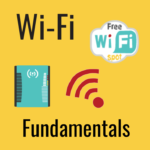
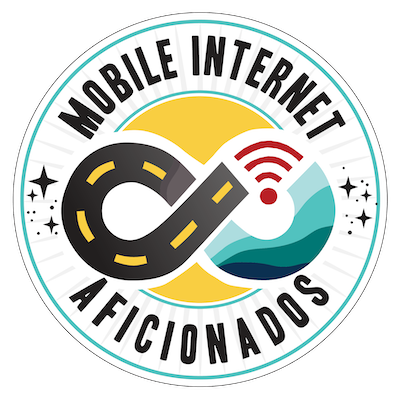
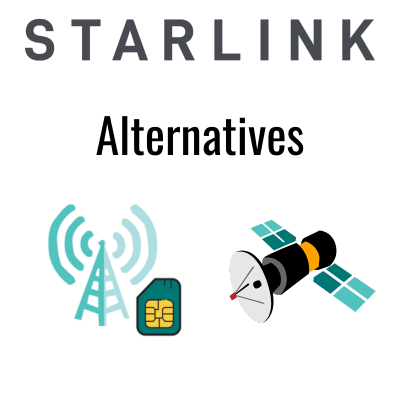
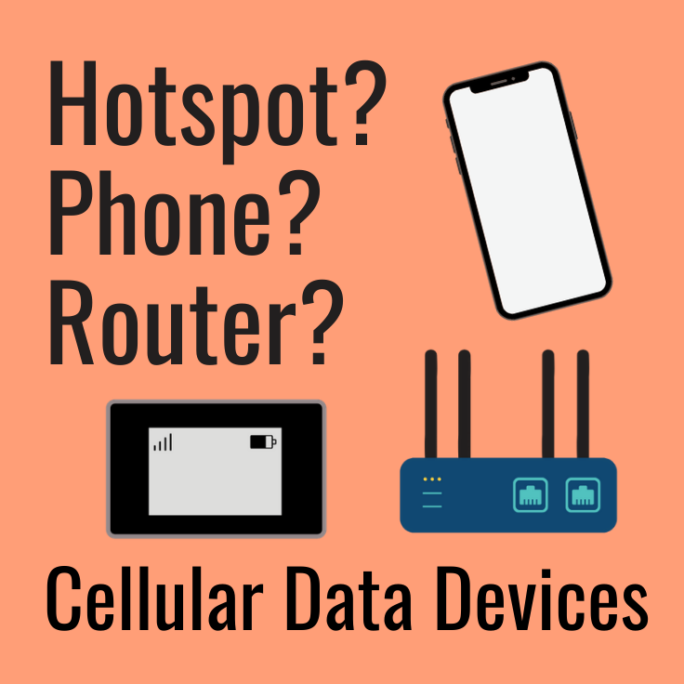
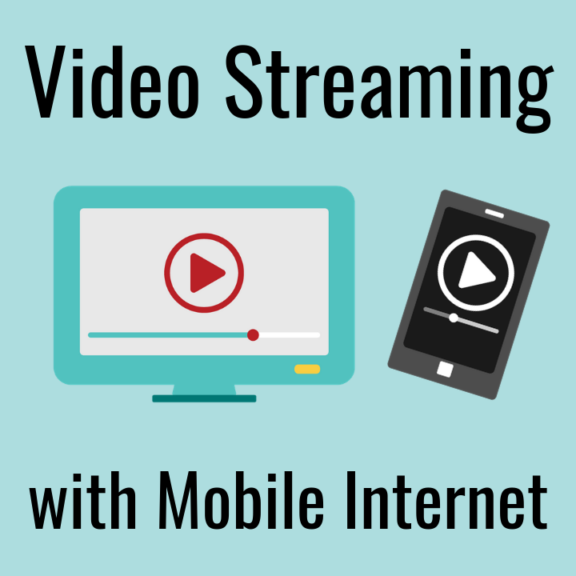




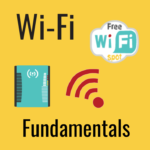

 Mobile Internet Resource Center (dba Two Steps Beyond LLC) is founded by Chris & Cherie of
Mobile Internet Resource Center (dba Two Steps Beyond LLC) is founded by Chris & Cherie of